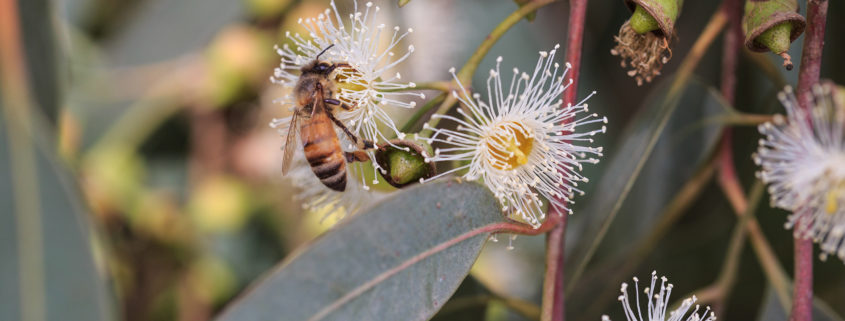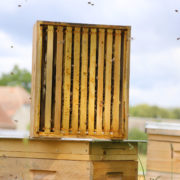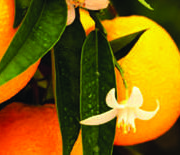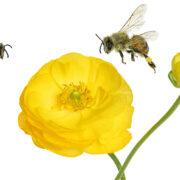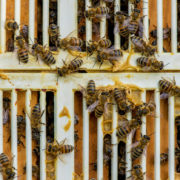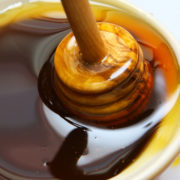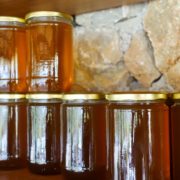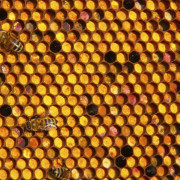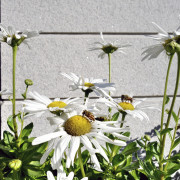Eucalyptus Honey
While California is well known for its picturesque palm trees, one can’t help but also notice the multitude of eucalyptus trees that seemingly sprout up everywhere. You might think that eucalyptus could even be the state tree, but there is no unseating the majestic redwoods that have deservedly earned that honor. Nevertheless, eucalyptus can be found in abundance throughout much of California, especially in the coastal and temperate areas of the state, where Wildflower Meadows is located.
Many different kinds of eucalyptus can be found around our apiaries – so many that there’s no keeping count. Some are large and sprawling; others are smaller and shapelier. Some have dark green leaves; others are light green. Eucalyptus is not technically just one tree, it’s actually a genus that includes over seven hundred species of flowering trees. Most species of eucalyptus are native to Australia, not the U.S., but they were introduced in California in the late 1700s.
From a beekeeper’s perspective, eucalyptus is gold. Nearly all the trees blossom with rich nectar-producing flowers. Plus, with all the different species, the flowering is varied and staggered over many months. Some species blossom in the summer, some in autumn, and some in the winter. It’s hard to imagine why a tree would blossom in the winter, but many beekeepers surmise that certain types of eucalyptus trees, being Australian natives, never abandoned their Australian seasonality.
Most species of eucalyptus have fluffy white, cream, yellow, pink, or red flowers. The flowers are a little unusual, however, making them easily recognizable. They get their fluffy appearance from a large display of stamens, instead of petals. Some are pretty to look at, others are not particularly attractive from a human perspective. Nevertheless, from the bees’ perspective, nearly all eucalyptus flowers are a treat! Eucalyptus blossoms are not necessarily known for being a rich pollen source for bees, but they do produce nectar – and often lots of it.
Although the leaves of eucalyptus plants are well known for their powerful essential oils – which are used for pharmaceutical purposes, disinfecting, insect repellent, flavoring, and fragrances – the nectar from the blossoms doesn’t quite deliver exactly the same flavor. The honey does, however, contain the eucalyptol compound, which gives it a somewhat medicinal, distinctive taste along with some healing properties.
Historically, eucalyptus honey has been used to treat coughs, common colds, congestion, and respiratory diseases due to its anti-inflammatory properties. Its antibacterial properties also make it helpful for treating minor cuts and burns. Eucalyptus honey promotes relaxation when consumed or when added to a running bath as well. The honey has a beautiful dark, reddish amber color and can be a great addition to food, beverages, or simply eaten from the jar.

